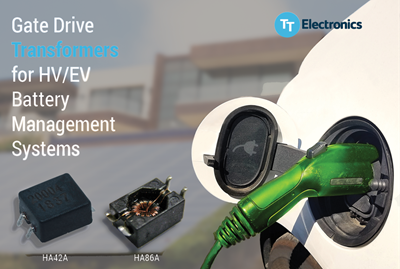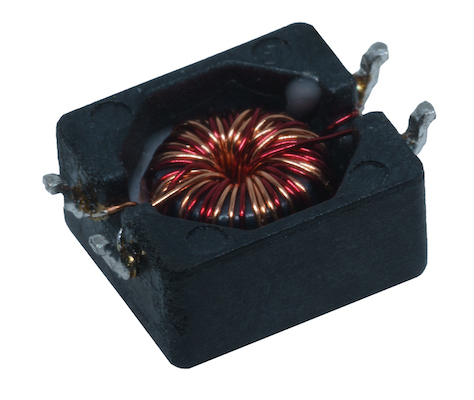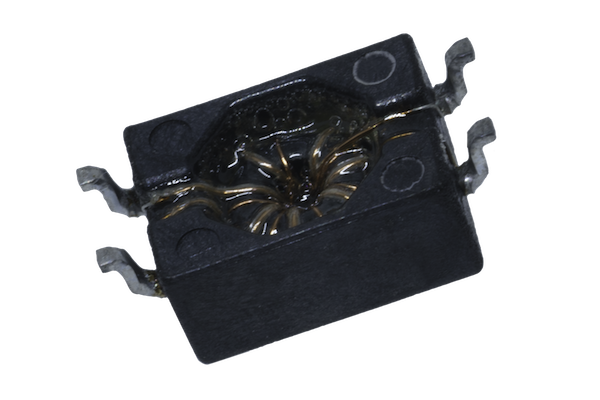As the EV market grows, TT Electronics offers new small, rugged gate drive transformer options for automotive.
Members of these two series of gate drive transformers are used to provide rock-solid voltage isolation for MOSFETS and their associated drive circuits in space-constrained scenarios. Mechanically robust with low leakage inductance, they provide significantly reduced turn-on and turn-off delay time, which aims to provide better system performance.

The HA42A and the HA86AQ series of gate drive transformers. Image from TT Electronics
Both series of gate drive transformers are lead-free and comply with the European Union’s RoHS Directive and also hold AEC-Q200 certification as required for by today’s automotive applications.
“High performance and reliability are key characteristics of a wide range of current and yet-to-be-developed applications. Nowhere is this more apparent than in automotive and industrial,” said Raj Kumar Singaraju, Global Product Line Director, Magnetics, TT Electronics. He calls the new transformers "an exceptional range of solutions for high-voltage and high-frequency applications where fast and accurate signal timing is crucial.”
The HA42a Series
The eight members of this series are:- HA42A-20001LFTR
- HA42A-20002LFTR
- HA42A-20003LFTR
- HA42A-20004LFTR
- HA42A-20005ALFTR
- HA42A-20006ALFTR
- HA42A-20007ALFTR
- HA42A-20008ALFTR

Image from TT Electronics
The first four have a primary-to-secondary turns ratio of 1:1, while the second four have a primary-to-secondary turns ratio of 2:1. All members of this series have a 500 Vdc primary to secondary isolation, measured at two seconds.
- Primary inductances range from 433 μH to 1667 μH, ±40%
- Leakage inductances vary over a 0.16 to 0.85 μH range
- Primary and secondary DC resistance will typically vary from 150 mΩ to 310 mΩ
The HA86a Series
All members of this series have a primary-to-secondary turns ratio of 1:1.The seven members of this series are:
- HA86A-10050LFTR
- HA86A-10125LFTR
- HA86A-10180LFTR
- HA86A-10255LFTR
- HA86A-10368LFTR
- HA86A-20050LFTR
- HA86A-20125LFTR

Image from TT Electronics
The first five feature a dielectric breakdown voltage of 500 Vdc at one second, with the last two are rated at 3750VRMS at one second.
All members of this series have:
- Similar minimum primary and secondary inductances ranging from 50 to 368 μH
- Maximum leakage inductances ranging from 0.08 to 0.10 μH
- Maximum primary and secondary DC resistances ranging from 0.100 to 0.250 Ω, and typically considerably less
Gate Drive Transformers from Other Manufacturers
The GT04 series of gate drive transformers from Ice Components have two, rather than one secondary, with the turns ratio being either 1:1:1 or 1:2.5:2.5. These devices meet medical safety isolation requirements and are designed for frequencies from 20kHz to 300kHz.Pulse Electronics offers a series of gate drive transformers, PO584NL ..… P0585ANL, featuring up to 4250Vrms gate to drive isolation. These devices adhere to IEC 61558, IEC 61010 and IEC 60601, and they offer as many as four secondaries.
Have you worked on EV battery design? What challenges are most important to you? Let us know in the comments below.






No comments:
Post a Comment